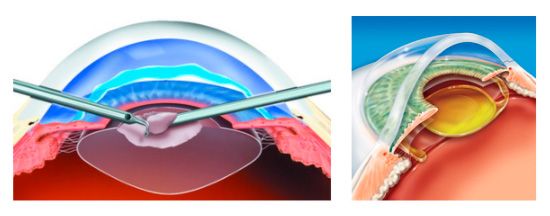CATARACTS

What is it?
Cataract is a total or partial opacity of the eye lens.
It occurs when the crystalline lens, the natural lens of the eye that has refractive capacity and allows focusing the objects and the passage of light, gradually loses transparency.
Cataracts are a problem that the entire population will suffer at some point. However, they are not cause for alarm. It is not a disease but a sign of ocular aging, and as such, we will all suffer from them.
There are also other factors that cause them, such as diabetes, eye infections, trauma and genetic inheritance. Currently, surgery is the best treatment.
Causes
- Diabetes
- Inflammation of the eyes
- Family history
- Prolonged use of corticosteroids or other medications
- Frequent exposure to radiation
- Smoking
- Having undergone surgery for another eye problem

Symptoms
Depending on the size and location of the lens opacity areas, a person may or may not realize that a cataract is developing. As cataracts increase, vision may become more blurred:
- The eyes may have a greater sensitivity to light, making it difficult to drive
- There is also an alteration in the perception of colours
- In many cases it can produce diplopia (double vision in the eye in which the cataract is occurring)
- Blurry or opaque vision.
- Difficulty to see at night
- Frequent changes in the prescription of glasses or contact lenses.
Diagnosis
The patient usually goes to the ophthalmologist because he or she notices a loss of vision. There are tests for diagnosis such as the determination of visual acuity. The doctor may see a cataract using an instrument called a slit lamp, and can see the extent of is opacity.
Treatment
The only really effective treatment is surgery. This technique involves removing the opaque lens. A small incision of less than 3 millimetres above the eye is made. Then the cataract is removed, using an ultrasound machine, and an intraocular artificial lens that replaces the opaque lens is placed through the same incision. In general, people who have a cataract can determine when they want to have it removed surgically. When people feel insecure, uncomfortable or unable to perform their tasks, it is probably time for surgery.

Currently, the surgery to remove cataracts is performed as early as possible, once the patient begins to notice their symptoms and perceive a deterioration in their quality of vision, regardless of whether or not they have refractive problems (presbyopia, myopia, hyperopia and / or astigmatism).


